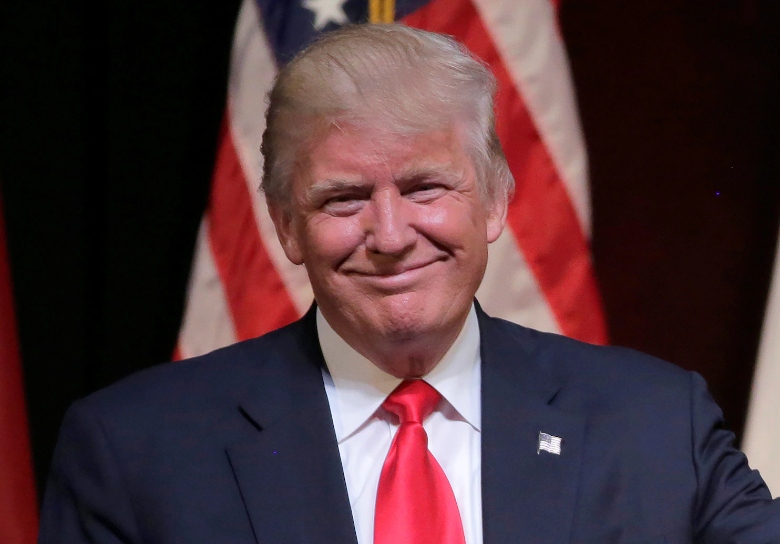As Donald Trump prepares to retake the White House, a groundbreaking initiative to auction off distressed federal government assets has returned to the forefront. This bold proposal, estimated to generate over $1.1 trillion, promises to fund critical infrastructure and other transformative initiatives aimed at uplifting America’s struggling working-class communities.
This ambitious plan centers on reviving the Generating American Income and Infrastructure Act (GAIIN Act)—a bipartisan effort first introduced during Trump’s initial term. While political turmoil sidelined the proposal in 2018, Trump’s return and a reinvigorated working-class coalition have reignited interest among key lawmakers.
Give Me News Podcast
The GAIIN Act proposes auctioning distressed federal loans and assets, shifting them to private ownership to generate revenue. The original plan, championed by Rep. Mike Kelly (R-PA) and former Reps. Ted Budd (R-NC) and William Lacy Clay (D-MO), focused on selling off U.S. Department of Agriculture (USDA) assets. Today, the initiative has expanded to include assets across multiple federal agencies.
A recent analysis by Andy Koenig, a former Trump White House official, estimates that this approach could yield $1 trillion over a decade. The federal government currently holds $1.9 trillion in outstanding loans and $87 billion in defaulted loan guarantees. By selling these loans to private buyers, the government could not only reduce its deficit but also shift resources toward infrastructure and economic development.
“This policy would generate $100 billion annually, prioritize distressed assets, and focus federal agencies on their core missions,” Koenig noted. The strategy also mirrors a successful precedent set by Ronald Reagan in 1986, when similar measures raised significant funds under the Omnibus Budget Reconciliation Act.
The GAIIN Act’s original bipartisan backing stemmed from its focus on addressing poverty in underserved communities. Representatives from both conservative and progressive factions supported the 2018 initiative, recognizing its potential to channel resources into districts most in need—often represented by members of the Congressional Black and Hispanic Caucuses, alongside Freedom Caucus Republicans.
Lobbyist Sam Geduldig, a longtime proponent of the GAIIN Act, emphasized its renewed relevance in light of Trump’s growing appeal among working-class voters.
“Trump’s 2024 coalition shattered political norms,” Geduldig said. “This plan is the quickest way to reward voters who trusted him and Republican majorities to address their economic concerns.”
Several influential figures have stepped forward to champion the GAIIN Act as a centerpiece of Trump’s second-term agenda.
House Majority Whip Tom Emmer (R-MN) stressed the need for innovative solutions to tackle the national debt and revitalize the economy. “Americans elected a Republican trifecta with a clear mandate to rein in reckless spending and boost our economy,” Emmer said.
Senator Jim Banks (R-IN), known for his staunch support of populist policies, echoed these sentiments. “Selling distressed federal debt can spur development in working-class communities without adding to the deficit,” Banks stated.
Senator Tim Scott (R-SC), a prominent advocate of Opportunity Zones from Trump’s first term, also sees the GAIIN Act as a natural extension of those policies. “Opportunity Zones have spurred $84.7 billion in economic growth where it’s needed most. Expanding these efforts through innovative proposals like the GAIIN Act will ensure more Americans benefit from these initiatives,” Scott explained.
Critics have raised concerns about potential risks, such as privatization undermining critical public services. However, proponents argue that the GAIIN Act offers a rare opportunity to address the nation’s infrastructure crisis while reducing federal debt. By prioritizing distressed assets for auction, the initiative aims to ensure that private buyers assume responsibility for underperforming loans, freeing federal agencies to focus on their primary missions.
Additionally, the proposal’s bipartisan nature could help it navigate Washington’s often polarized political environment. Mike Williams, a Democratic lobbyist and advocate for the plan, highlighted its potential to unite lawmakers from both sides of the aisle.
“This proposal isn’t about party affiliation; it’s about addressing real needs in underserved communities,” Williams said. “I’m committed to working with leaders from both parties to ensure its passage.”
The GAIIN Act symbolizes a shift in federal policy aimed at empowering the working class. By redistributing resources from Washington elites to everyday Americans, the plan aligns with Trump’s broader vision of economic revitalization.
As Trump takes office, the GAIIN Act’s potential to generate $1.1 trillion in revenue could redefine how America funds its priorities. With bipartisan support and a clear focus on addressing economic inequality, the initiative offers a unique opportunity to reshape the nation’s future.
The GAIIN Act’s revival is more than a legislative proposal—it’s a testament to the power of populism to unite Americans across political and demographic divides. As Congress prepares to debate this transformative idea, its success could mark a turning point in addressing the challenges faced by working-class communities nationwide.
With Trump’s leadership and bipartisan momentum, the GAIIN Act is poised to deliver on its promise to rebuild America’s infrastructure, uplift its most vulnerable communities, and pave the way for a brighter, more equitable future.


first off should be all of the dnc buildings and electronics hardware, then maybe all left wing homes. why you ask, well after all the trouble they have caused and are still trying, to get rid of them completely, once and for all time.
will it be sold to his zionist friends and include lands with VALUABLE MINERAL RIGHTS so his zionist friends will have ecen more Kontrol over us?